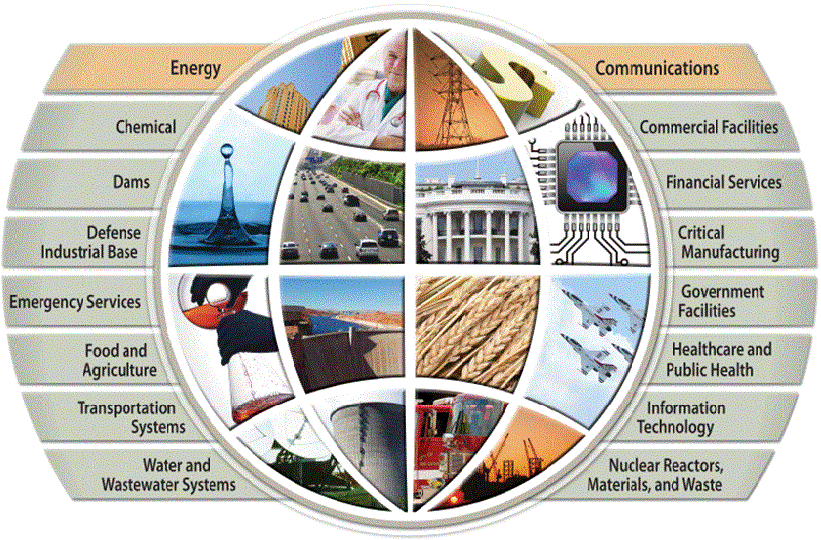16 critical infrastructure sectors

Certainly, here's a detailed breakdown of the 16 critical infrastructure sectors:
Chemical Sector: Includes facilities involved in manufacturing, storing, and distributing chemicals. It covers industries such as petrochemicals, pharmaceuticals, and hazardous materials. Chemicals are essential for various industries and products, making this sector critical.
Commercial Facilities Sector: Encompasses venues where large groups of people gather, like shopping malls, hotels, sports stadiums, and entertainment centers. Ensuring security in these places is crucial for public safety and maintaining economic activities.
Communications Sector: Involves communication networks, including wired and wireless telecommunications, internet service providers, satellite systems, and broadcasting. Reliable communication is vital for emergency response, business operations, and overall connectivity.
Critical Manufacturing Sector: Produces goods crucial to other sectors, including aerospace, automotive, electronics, and machinery. This sector ensures the availability of essential materials and components for various industries.
Dams Sector: Encompasses both the physical structures of dams and the systems that manage water resources. Dams provide water supply, hydroelectric power, and flood control, making their security and operation critical.
Defense Industrial Base Sector: Involves the production, delivery, and maintenance of defense-related products and services. This sector supports national security by ensuring the readiness and functionality of military assets.
Emergency Services Sector: Encompasses first responders, emergency management agencies, and public safety communication systems. Police, fire, medical services, and coordination during emergencies fall under this sector.
Energy Sector: Includes electricity, oil, natural gas, and nuclear energy systems. Energy is the backbone of modern societies, and ensuring the reliability and security of energy sources is critical for all aspects of life.
Financial Services Sector: Encompasses banking, financial markets, payment systems, and other institutions. It's vital for economic stability and global financial transactions.
Food and Agriculture Sector: Involves production, processing, distribution, and retail of food products. This sector ensures food security and safety, critical for public health and societal function.
Government Facilities Sector: Includes government buildings and offices that provide essential services, administrative functions, and public services at all levels of government.
Healthcare and Public Health Sector: Encompasses healthcare providers, medical facilities, pharmaceutical manufacturers, and public health agencies. It ensures the health and well-being of the population.
Information Technology Sector: Involves hardware, software, data centers, and digital services. This sector supports various industries and is crucial for data storage, communication, and technological advancements.
Nuclear Reactors, Materials, and Waste Sector: Involves nuclear power plants, materials like radioactive isotopes, and nuclear waste management. Safety measures are paramount due to the potential risks associated with nuclear technology.
Transportation Systems Sector: Encompasses aviation, maritime, rail, road, and public transit systems. This sector ensures the movement of people and goods, supporting economic activities and connectivity.
Water and Wastewater Systems Sector: Involves drinking water treatment, distribution systems, and wastewater treatment. Clean water supply and proper sanitation are essential for public health and overall well-being.
These critical infrastructure sectors are interconnected and interdependent, forming the foundation of modern society. Protecting them requires collaboration between government, private industries, and individuals to ensure the security, resilience, and continuity of essential services.
Comments
Post a Comment